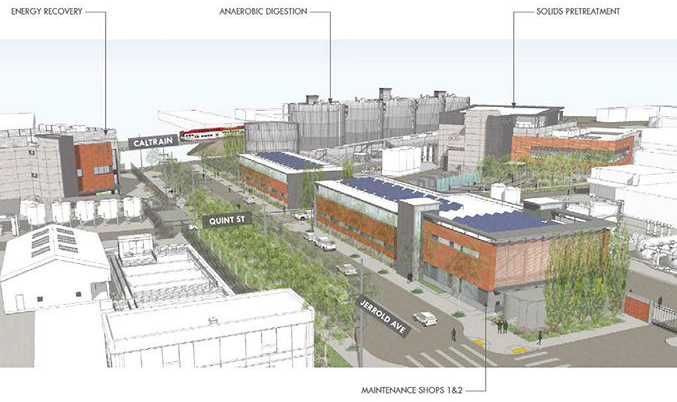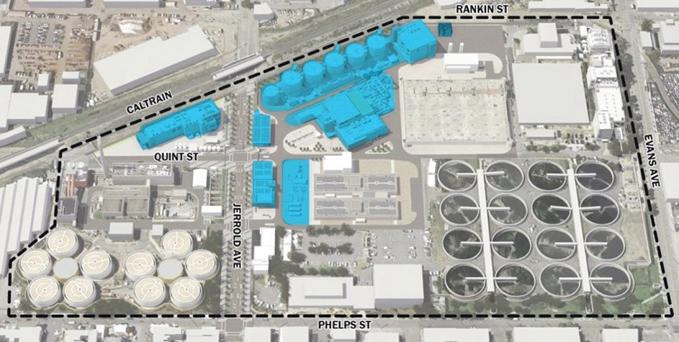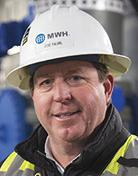Securing The World's Water, Food, And Energy Supply By 2050: Wastewater Treatment Is Central To The Solution
By Joe Sesil
As wastewater treatment plants evolve into resource recovery facilities, the thermal hydrolysis process (THP) is destined to play a starring role, with some major THP projects having already set the stage.
Our planet will host 30 percent more people by 2050. To meet this population surge, we must produce 60 percent more food, 30 percent more energy, and 55 percent more water.
All of this depends on having enough water, and the figures are sobering. According to the UN, 70 percent of global water withdrawal is used for agriculture, 90 percent of global power generation is water-intensive, and 20 percent of the world’s aquifers are overexploited.
This reality requires us to be more creative in managing our water resources, food supply, and energy production. Innovations, such as thermal hydrolysis process (THP) systems for wastewater treatment, are central to the solution because they provide benefits for each factor in the water equation.
THP systems produce higher-quality biosolids, capture and treat odors more effectively, and maximize biogas utilization and energy recovery to produce heat, steam, and energy. These benefits give municipalities a cost-effective win-win-win for their wastewater treatment — replenished freshwater supply, a renewable energy source, and Class A biosolids that can be sold to the agriculture sector.
Coupled with the fact that many cities have aging, outdated infrastructure, municipalities worldwide have launched aggressive campaigns to upgrade water management systems with efficient, green technology.
Thames Water’s “London 2100” is a comprehensive response to climate change and infrastructure needs for the city’s expected doubling in population by the year 2100. One of the largest municipally managed water providers worldwide, Thames supplies nine million residents with 3.1 billion U.S. gal. (11. 8 billion L) of water and 14 million residents with wastewater services.
In the U.S., the San Francisco Public Utilities Commission (SFPUC) is moving forward with the Sewer System Improvement Program (SSIP), a 20-year, city-wide investment to upgrade aging infrastructure with a reliable, sustainable, and seismically safer sewer system.
Overcoming cost challenges is difficult on projects of this magnitude. In the cases of London and San Francisco, both are dense metropolises with miles of underground piping that is over 100 years old.
THP: A Cost-Effective Wastewater Solution
Water providers are looking for affordable, reliable solutions that won’t skyrocket customers’ monthly water bills. Many communities are reimagining how they handle wastewater treatment to increase both the capacity and efficiency of their systems.

Full-view rendering of SFPUC’s Biosolids Digester Facilities Project (BDFP)
SFPUC will start the $900-million Biosolids Digester Facilities Project (BDFP) in early 2019 at its Southeast Water Pollution Control Plant (SEP), which processes 80 percent of San Francisco’s waste and stormwater before it’s discharged to the ocean. The project will:
- Reduce the number of digesters from nine to five
- Generate 5 MW of electricity to power the new facility
- Improve biosolids quality from Class B to Class A
- Limit odors to within the SEP fence line.
The Trinity River Authority of Texas’ (TRA) Central Regional Wastewater System (CRWS) is advancing the $196 million, Phase III-B Solids Management Improvement Project, part of its wastewater system that serves more than 1.2 million in the greater Dallas region.

Site layout for SFPUC’s Southeast Water Pollution Control Plant/BDFP
While THP systems have shown success in Europe, the technology is new to the U.S., with Washington D.C. the first city with a completed project. MWH Constructors and Stantec Treatment, having completed 20+ of the world’s 50 THP projects to date, are now leading two projects in the U.S.
Both SFPUC and TRA selected MWH Constructors to build the treatment plants using THP technology due to its many financial benefits, which can mean up to 50 percent lower cost than other methods. The SFPUC project is a joint-venture partnership with Webcor.
The new wastewater treatment plants will smell and look better, operate more efficiently, and protect critical equipment in the event of natural disasters. With those attributes, expect more communities to consider THP for their wastewater treatment solution.
Benefits Of THP
- Reduced Footprint — THP plants are typically 25 percent smaller due to the efficiency of the process, making them ideal for high-density urban areas.
- Renewable Energy — Biogas is used to generate electricity to offset plant operation costs, which also reduces the overall sludge discharge that needs to be disposed.
- Class A Biosolids — The final biosolids are pathogen-free and can be a revenue source by selling to the agriculture industry.
- Reduced Odors — The organic materials converted to biogas for electricity generators reduce the overall odors emitted from the plant, improving the plant’s impact on neighbors.
The new wastewater treatment plants will smell and look better, operate more efficiently, and protect critical equipment in the event of natural disasters.
About The Author
 Joe Sesil, Project Manager, MWH Constructors, has more than 31 years of experience in engineering and construction management with projects exceeding $2 billion in value. His expertise and experience span multiple project types, including water and wastewater, sanitary sewer overflow, and highway and bridge construction. Joe is well-versed in aspects of projects from start to finish, including commissioning and start-up, preconstruction, design, permitting, and all facets of construction management. He is based in San Francisco.
Joe Sesil, Project Manager, MWH Constructors, has more than 31 years of experience in engineering and construction management with projects exceeding $2 billion in value. His expertise and experience span multiple project types, including water and wastewater, sanitary sewer overflow, and highway and bridge construction. Joe is well-versed in aspects of projects from start to finish, including commissioning and start-up, preconstruction, design, permitting, and all facets of construction management. He is based in San Francisco.
